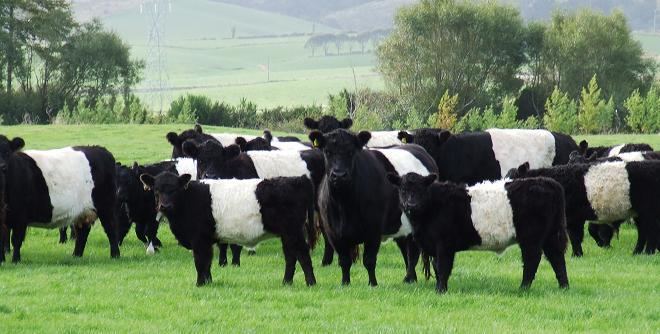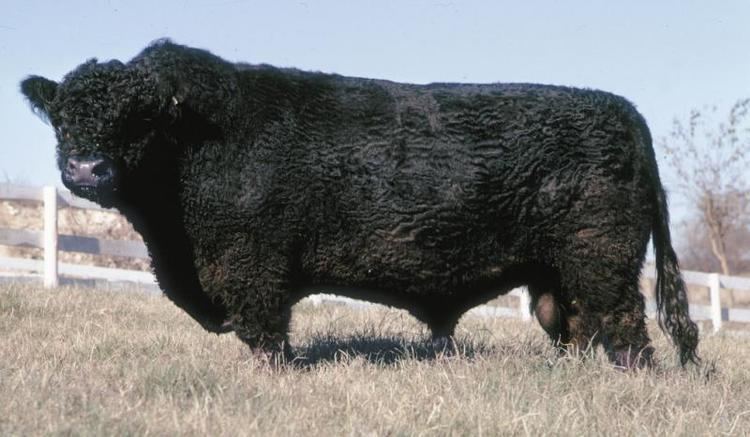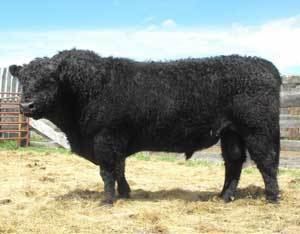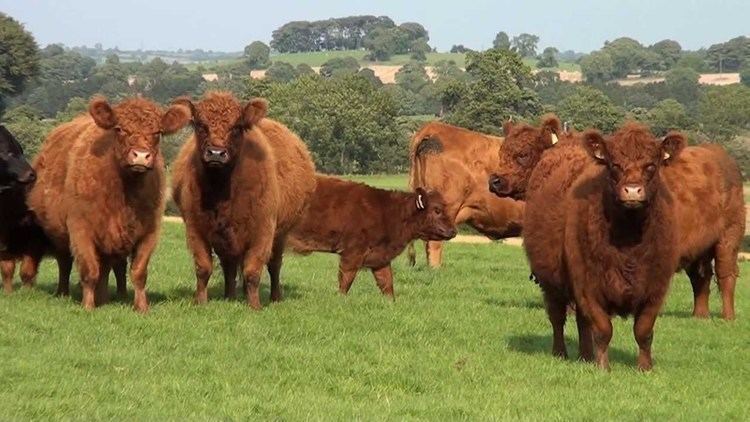Horn status Polled Rank Breed | Scientific name Bos taurus | |
Weight Male: 1700–2300 poundsFemale: 1000–1500 pounds Coat Black, some countries recognise red.Dun Similar Belted Galloway, Highland cattle, Hereford, Shorthorn, Charolais cattle | ||
Galloway cattle
The Galloway is one of the world's longest established breeds of beef cattle, named after the Galloway region of Scotland, where it originated, during the 17th century. It is now found in many parts of the world, such as Canada, the United States and Australia.
Contents
- Galloway cattle
- Grassfed beef buy 100 grassfed grass finished beef from galloway cattle
- Etymology
- History
- Characteristics
- Population
- Societies
- References

It is now found in many parts of the world, being exported to Canada in 1853, the US in 1882 and Australia in 1951. The breed enjoyed success during the 1950s but this subsided during the foot and mouth crisis. Today, the breed is enjoying a revival, due to the demands of the beef market. The breed is considered average size and they have a thick coat, due to the climate of their native Scotland.

Grassfed beef buy 100 grassfed grass finished beef from galloway cattle
Etymology

Galloway is an ancient region located in the south-west of Scotland. The word 'Galloway' is derived from the words Gallovid, or Gallgáedil.
History

The Galloway breed comes from the cattle native to the south-west region of Scotland, first fully developed in the 17th century. Originally there was much variation within this breed, including many different colours and patterns. The original Galloway herd book only registered black cattle, but the recessive gene for red colour persisted in the population, and eventually dun Galloways were also allowed into the herd book. As a result, although black is still the most common colour for Galloways, they can also be red and several shades of dun. In 1877 the Galloway Cattle Society was formed.
The Galloway was introduced in Canada in 1853, first registered in 1872, and the first Galloway registry was introduced in the United States in 1882. In 1911, 35,000 cattle were registered in the American Galloway Herd Book which was first created in 1882. The British Galloway Society formed in 1908. They did not recognise dun coloured Galloway cattle, which was met with outrage and this ban was later lifted. In 1951, Galloway cattle were introduced to Australia.
In the 1950s the breed enjoyed much success because the beef market demanded low input (feed) cattle with high quality meat. However, the BSE crisis (commonly referred to as mad cow disease) caused an export ban in 1990, although there were no cases of BSE found in Galloway cattle. This created a fear associated with cattle, so breed numbers declined.
Recent years have seen changes as bigger leaner carcasses were demanded. This issue of size featured in Galloway circles causes great debate. Some of the adjustments made was the adoption of AI and Embryo Transfer. Today the breed's original characteristics are now back in demand. This is due to the demand of high quality meat that requires economical production.
Characteristics
The average Galloway cow will weigh 1000 to 1500 pounds and the average bull weighing 1700 to 2300 pounds. The healthy birth weight for a calf is 75 pounds.
Galloways have a thick double-layered coat that is wavy or curly. This thick coat of hair insulates their bodies so well that they have a minimal outer layer of fat on their bodies, which would otherwise create waste at slaughter. This coat sheds out in the summer months and in warmer climates. Despite the animal's usual use in beef production, there is evidence of Galloway herds being milked in Cumberland for cheese production.
The Galloway is naturally hornless, and instead of horns has a bone knob at the top of its skull called the poll. This breed's shaggy coat has both a thick, woolly undercoat for warmth and stiffer guard hairs that help shed water, making them well adapted to harsher climates.
Population
It is thought that the breed number fewer than 10,000 cattle in the world, most located in Northern Europe, specifically Scotland. The breed is 'rare' in the United States and the Livestock Conservancy class it as a breed to 'watch'.
